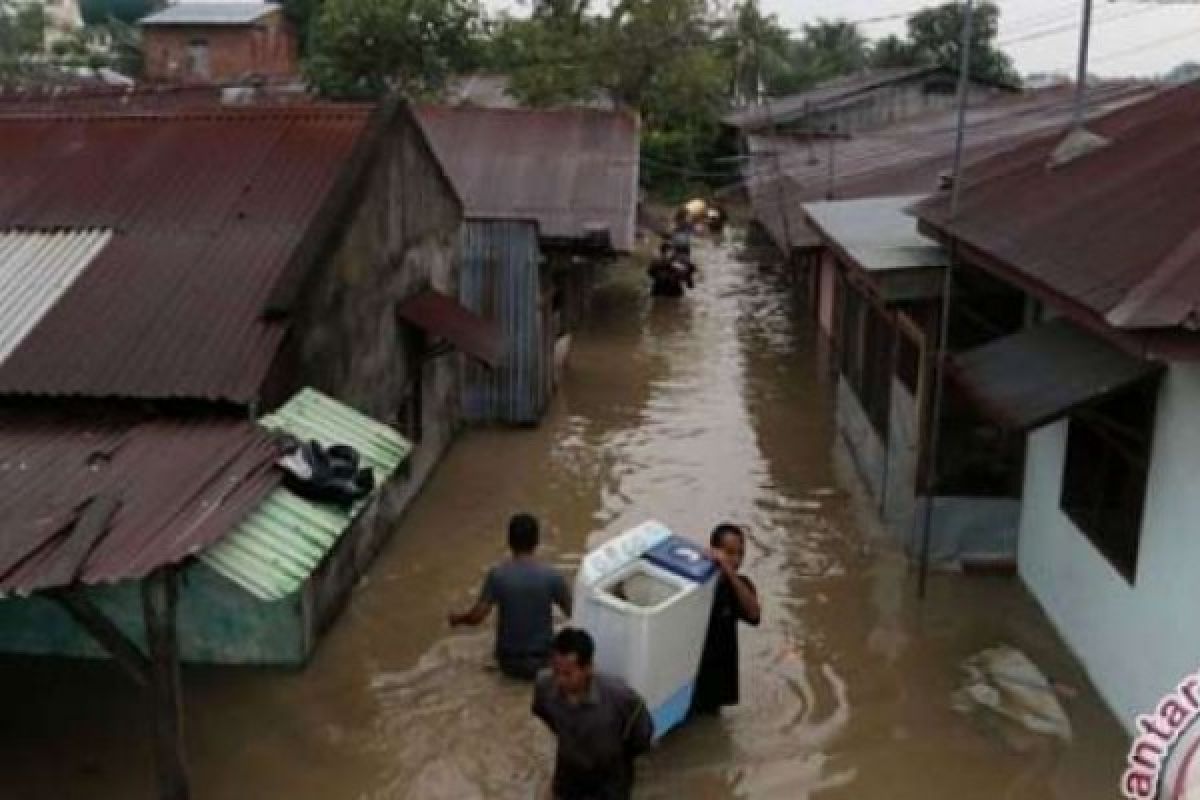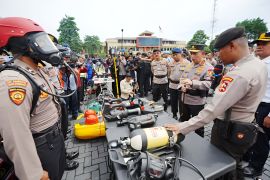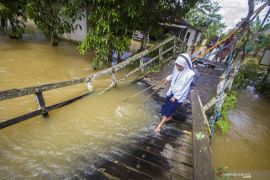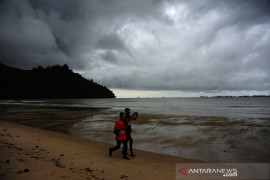La Nina has been developing since October 2021 and is expected to strengthen in November and December and become a moderate La Nina by the end of 2021 to February 2022, according to BMKG Head Dwikorita Karnawati.
In January 2021, a total of 372 natural disasters had hit Indonesia and left 216 persons dead and 12,056 others injured, partly owing to weak La Nina that had developed since late 2020 and raised monthly rainfall by up to 70 percent.
The natural disasters comprised 227 floods, 66 whirlwinds, 60 landslides, seven earthquakes, seven high tides or abrasions, and four forest fires, according to the National Disaster Mitigation Agency (BNPB).
La Niña refers to the large-scale cooling of the ocean surface temperatures in the central and eastern equatorial Pacific Ocean, coupled with changes in the tropical atmospheric circulation, namely winds, pressure and rainfall. It usually has the opposite impacts on weather and climate as El Niño, which is the warm phase of the so-called El Niño Southern Oscillation (ENSO).
Climate change is increasing the severity and frequency of the nature phenomena and disasters.
La Nina, which means the Little Girl, usually triggers torrential downpours and widespread flooding across the country.
Indonesia, with monsoon and dry seasons, is prone to natural disasters, and usually some 75 percent of the disasters are hydrometeorological in nature, such as flooding, landslides, and strong winds.
"It needs to be addressed appropriately by the entire community, especially farmers, so that excessive rainfall does not cause losses to agriculture," she said.
She emphasized the needs for improved early warning system and dissemination of weather forecasts to mitigate the disaster risks.
The agency also called for intensive coordination among relevant ministries and institutions, and improved disaster risk management in regions.
Related news: Need to scale up hydro-meteorological disaster risk education: Effendy
On Oct 29, 2021, BMKG hosted a virtual coordinating meeting on preparations for La Nina impacts, which was participated in by representatives of relevant ministries and institutions.
BNPB Head Ganip Warsito, who joined the meeting, urged hydro-meteorology disaster-prone regions to heighten vigilance and preparedness for the La Nina event.
He cited Central Java, West Java, East Java, and South Sulawesi as regions that had recorded the highest number of hydrometeorological disasters between 2016 and 2020.
Weather forecast and early warning issued by BMKG are crucial as references for on-field responses. Detailed information could result in accurate on-field decisions that could save lives, he noted.
Efforts to mitigate hydrometeorological disasters in the short term can be made by planting vegetation, cleaning waterways, repairing river embankment, and optimizing drainage strengthening.
For long-term mitigation, spatial planning must conducted accordingly and take into account the disaster aspects, Warsito added.
The system will provide early warnings for landslides in the upstream areas of rivers and map out the levels of runoff, according to Deputy Minister of Environment and Forestry Alue Dohong.
Meanwhile, the Ministry of Public Works and Public Housing (PUPR) and the Indonesian Hydraulic Engineers Association (HATHI) have also prepared several measures for tackling the impacts of La Nina.
"As per BMKG forecast, the rain pattern from late 2021 to early 2022 will be influenced by La Nina," the ministry’s Secretary General Zainal Fattah said in his welcoming speech at the Annual Scientific Meeting (PIT) of HATHI at the Sepuluh Nopember Institute of Technology (ITS) Surabaya, East Java Province, on Oct 30, 2021.
Indonesia is one of the countries that possess considerable water resources. Those huge resources must be sustained with good management, he said, adding that "However, our water resources also hold the potential to cause damages. Natural disasters are showing an increasing trend."
Related news: Research and innovation crucial to expedite disaster risk reduction
Data from the BNPB showed that Indonesia recorded 750 floods in 2019, over one thousand in 2020, and the number increases this year, according to him.
Hence, the ministry has taken several anticipatory steps, including activating the disaster mitigation task force to monitor all existing infrastructure in Indonesia and inspect the flood volume.
"We are also carrying out disaster alert SOPs (standard operating procedures) at 250 dams with a reservoir volume of 4.7 cu m," he noted.
In the meantime, Coordinating Minister for Human Development and Culture Muhadjir Effendy urged the authorities to increase education and information dissemination regarding hydro-meteorological disasters among the public.
"Hydro-meteorological risk ought to not escalate to a fatal disaster. To cut this vicious circle, we must have a better and thorough understanding of hydro-meteorological disaster and its risks," he said at the meeting on La Nina risk mitigation.
Indonesia should not wait till risk turns into disaster and instead, the authorities must reduce disaster risks by disseminating knowledge and encouraging preparedness among the public.
While improving residents' preparedness, information dissemination would also help reduce potential material and life losses, thereby positively impacting public welfare and resilience against potential hydro-meteorological disaster risks, Effendy said.
Improved seasonal forecasts are pivotal in this because they help plan ahead and gain substantial socio-economic benefits in climate sensitive sectors like agriculture, food security, health and disaster risk reduction.
Related news: Indonesia committed to disaster management: official
Editor: Rahmad Nasution
Copyright © ANTARA 2021










